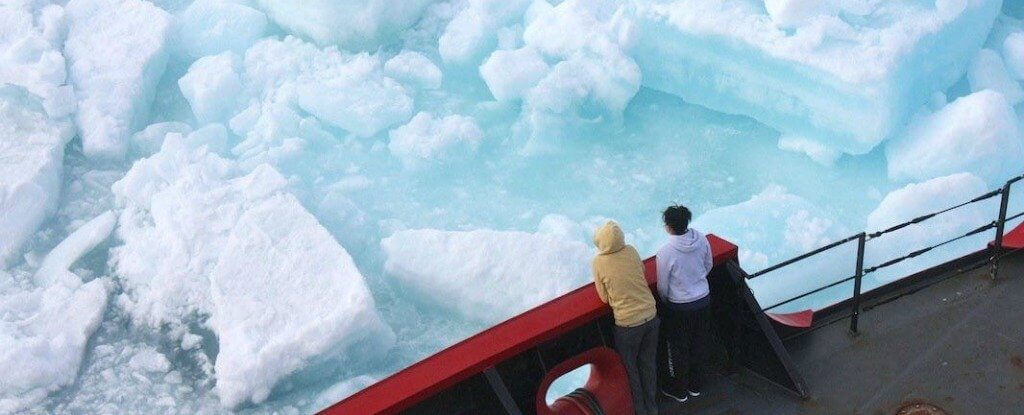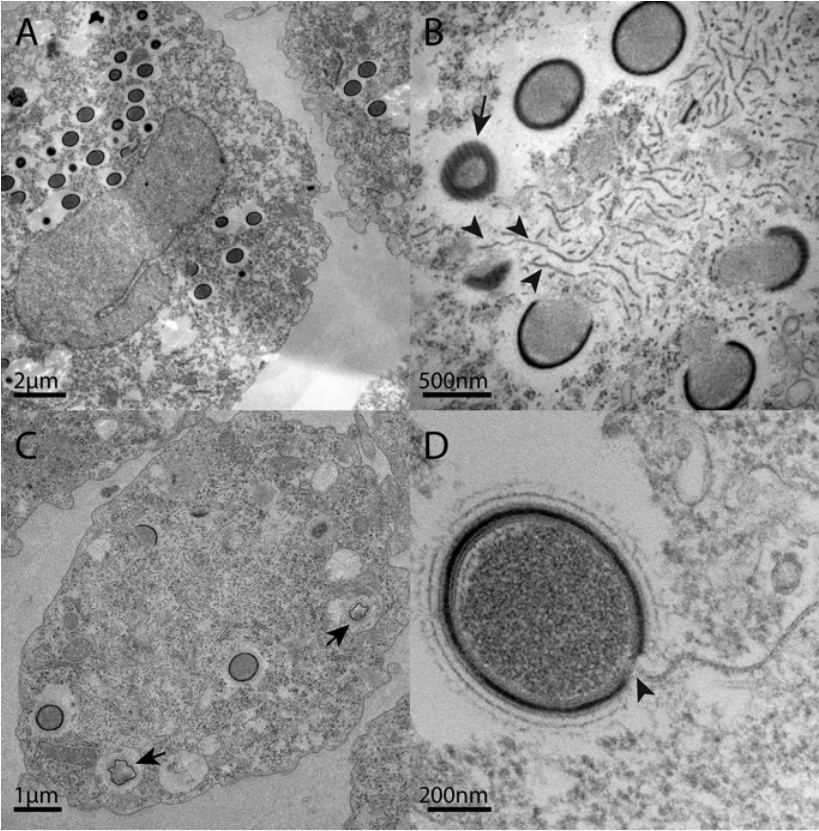
Scientists for decades have worked in the Arctic circle, they say that the melting of eternal ice can bring far more problems than previously thought. Under the impenetrable layer of Arctic ice can escape dozens of ancient viruses, waiting to be awakened. It can happen in that case, if the permafrost in which they reside, subside.
In 2015 the French group of scientists led by Jean-Michel Klaveri and Chantal Abergele opened in the snows of Siberia Mollivirus sibericum, the virus by the age of 30 thousand years. Shipping it to the lab and the experiments showed that the virus infects amoebas Acanthamoeba.
In the early 90s in the ice tundra of the Russian scientists first discovered mimivirus, initially mistakenly taken for the bacteria. Unlike viruses, mimivirus possess genes for the production of complex proteins amino acids and proteins. A detailed study of a complex genome (containing 1200 genes, for comparison, HIV has only 9) mimivirus is still ongoing. Mimivirus so large that are visible in an ordinary optical microscope. With a size of about 0.5 micrometer. Mimivirus occupy an intermediate position between viruses and microbes, mimicking the latter (hence the name).
Recently, some scientists made the assumption that these giant viruses can get out and infect a lot of people. Fortunately, the vast majority of researchers say that it sounds more like the script of any horror from the 90’s.
According to opinion of columnist New York Times Carl Zimmer, the recently released book “a planet of viruses”, in which he tells in detail about the known viruses and the diseases they cause, the likelihood of such a scenario is extremely low. Even unlikely.
“This particular type of virus infects only amoebas. If you are an amoeba, then you certainly ought to worry,” said Zimmer in an interview with publishing Business Insider in 2015.
“From the eternal Siberian permafrost’t broke even a single pathogen threat to humans. Of course, this does not preclude the emergence of new viruses in the future, but now living organisms have their virus so that all the frozen virus I would put on the bottom of the list of our possible fears”.
Recently Zimmer in an e-mail to Business Insider again touched on this subject and added that all the specimens of these giant viruses were discovered in the laboratory in water samples obtained from the collected samples of ice. In other words, at the moment, the virus still remain frozen and do not move on the Russian tundra as a kind of microscopic “Frankenstein”, killing all around.
“They themselves climbed out. Them gently thawed already in the laboratory. In my opinion, this is another evidence that the risk of outbreaks of ancient viruses is extremely low. I would even say unlikely,” said Zimmer.
Anyway, the importance of such ancient finds for science is undeniable. After using these samples we can better understand the true nature of viruses, which, apparently, might be more complicated than previously thought. Speaking of the same size, these giant viruses were about 30 times more than usual.
The photo below shows how it looks under a microscope virus Mollivirus sibericum:

In addition to its unusual size, the same Mollivirus sibericum differs from conventional viruses that it has more than 500 individual genes responsible for the production of complex proteins.
“These things are really very interesting and make us think about what really are the viruses,” says Zimmer.
From a technical point of view, the virus considered to be nonliving infectious agents (meaning they can reproduce only inside living cells, which affect). However, this mimivirus show some signs peculiar to living beings – they have a functioning metabolism.
If permafrost will continue to decline, can “awaken” the ancient virus
Nikolai Khizhnyak